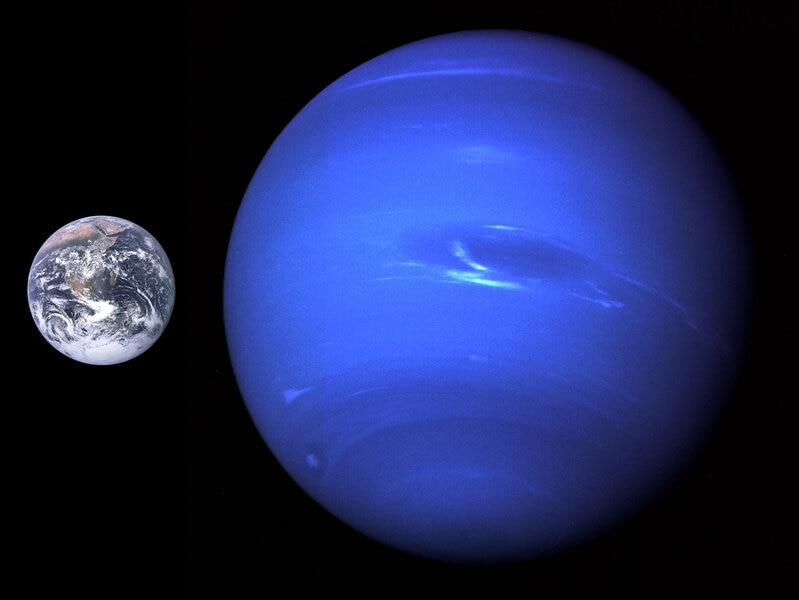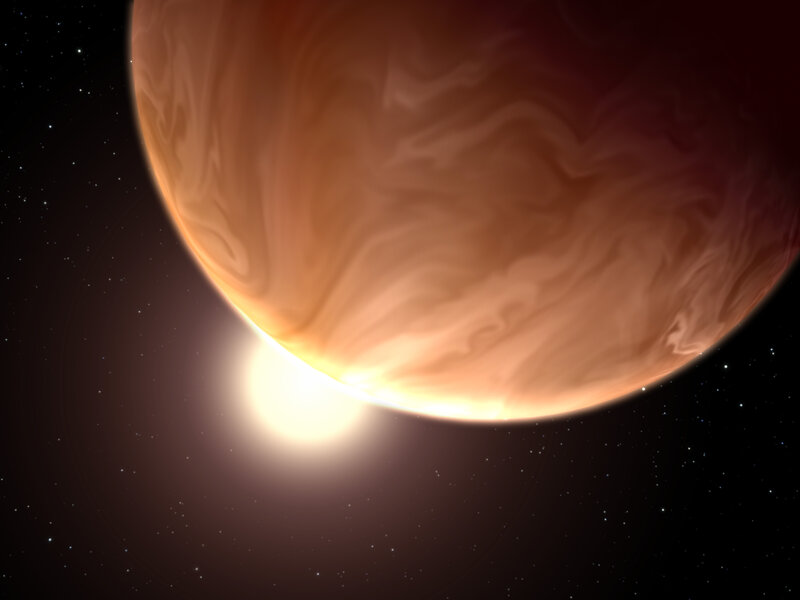Create a free profile to get unlimited access to exclusive videos, sweepstakes, and more!
Gassy or metal? Newly found planets straddle the line for super-Earths

The more we study the Universe, the more we discover it's telling us that we're weird.
Case in point: Over the past 20 years or so, we've been finding lots of exoplanets, planets orbiting other stars. At first the ones we found were very close to their star and very massive ("hot Jupiters"), because those were the easiest to find using the tech we had a the time.
But as we got better at finding exoplanets, we found a wide variety of them. So many, in fact, that we could start to put them into different bins; what I like to think of as planetary zoology. This kind is big, that kind small; those orbit close in, these farther out. When you do this sort of thing, and you have enough examples, trends start to make themselves known.
And one thing we've found is that one of the most common types of planets in the Universe doesn't seem to exist in our solar system: super-Earths.
These are planets that are bigger than Earth but smaller than Neptune (which is about 4 times wider than Earth). We see them everywhere, but not here in our solar system*. There are ideas as to why this may be, but we're not really sure just yet.
There's another big question about these kinds of planets, too: What are they made of? The physics of how planets work implies that smaller ones would be more like Earth: dense, and rocky and/or metallic. Bigger ones closer to Neptune in size would be tend to be more gaseous with thick atmospheres. That makes sense; as you form a planet and add mass to it, at some point the gravity should get strong enough to hold on to more gas. The planet grows wildly at that point, and your super-Earth turns into a mini-Neptune.
But where's that line? Observations suggest it's around 1.6 times the diameter of the Earth, but that depends on a lot of things (like how hot the planet is, what it's made of, and so on). But without better measurements of the sizes and masses of these planets, it's hard to say what's going on.
And that's why the star GJ 9827 is so exciting. It's a star a little bit less massive and cooler than the Sun, and just 100 light years away. In 2017, two teams of astronomers announced at almost exactly the same time that they had found three planets orbiting it. All three planets were in the super-Earth range in size, and they all huddled close to the star in tight orbits, taking 1.2, 3.6, and 6.2 days to circle it once (I'll note that this means they are all getting cooked by their star; even the one farthest out gets thirty times as much incoming radiation from the star than Earth does!).
The planets were found using the transit method; they orbit the star edge-on as seen from Earth, so as they pass in front of the star they block its light a wee bit. That dip in brightness can be measured, and in fact that's how the planet sizes are measured: If you know how big the star is, the amount of light a planet blocks depends on its size relative to the star.
The three planets — called GJ 9827 b, c, and d in order from the star — have diameters of 1.64, 1.28 and 2.08 times Earth. That's very interesting indeed, because they span the "radius gap", the size limit that nature appears to have that separates super-Earths from mini-Neptunes!
But how can we tell if they're rocky like Earth, or gasbags like Neptune? We'd have to know their densities: super-Earths are smaller and dense, mini-Neptunes are bigger and fluffy. But to get that info, we need their masses.
And finding their mass is a different story. For that, you need very careful measurements of the star's light. The gravity of the star keeps the planet orbiting the star, but the planet has gravity too, which tugs on the star. As the planet makes a big circle around the star, the star makes a smaller circle, with both orbiting their center of mass (I describe all this in my episode of Crash Course Astronomy on exoplanets). This means the star appears to be making a little circle in the sky, too small to see directly but revealed by a Doppler shift in its light. Though difficult, this can be measured, and that can in turn be used to figure out the planets' masses.
A team of astronomers just did that! By coincidence, they have been observing GJ 9827 for years, as part of a program to look for planets around stars less than about 325 light years from Earth. Because the star is relatively close to Earth and bright, it's easy to observe. Also, because all three planets have such short orbits, these measurements have caught many complete planetary "years", giving the astronomers a pretty good picture of the system.
What they found is pretty neat. The planets have masses of 8, 2.5, and 4 times the Earth (again, in order). There's some uncertainty there (especially for the middle one which is low mass and therefore very hard to measure), but this is enough to tell us some interesting things.
For one, GJ 9827b is very dense! Doing the math (remember from high school: density is the mass divided by the volume, and volume goes as the cube of diameter), GJ 9827 b has a density about 1.8 times Earth's. Even though it's bigger than we are, it has a lot more mass, so it must be very dense. GJ 9827b must have a lot more iron in it, maybe as much as 50% by mass! That's a lot more than Earth has.
But what's also so very interesting about this is that this means it probably doesn't have a thick atmosphere! If it did, it would be far less dense (or to phrase it another way, the puffy atmosphere would make it a lot bigger). So this planet is very likely to be a super-Earth.
GJ 9827d is another story. At its size and mass, it has less than half the density of Earth. That fits with it being a mini-Neptune. It likely has a thick atmosphere loaded with hydrogen and helium, and/or possibly lots of water (which is far less dense than rock and metal).
So what does this tell us? One idea is that these planets form big, more like mini-Neptunes, but if they happen to be really close to their star the atmosphere gets blown away from the intense light from the star. This is called photoevaporation, if you're looking for a good word to drop into a conversation. After a while, maybe a few billion years, what you're left with is a lower mass but much denser super-Earth. The GJ 9827 system fits that idea; the closest planet is the densest and the farthest out the least dense.
Or, perhaps it started off with more rock and lighter materials, but suffered a giant grazing impact that scraped off the lighter stuff, leaving the heavier stuff behind. That's not as silly as it sounds: We think that happened to Earth, and in fact that's how our Moon formed.
Getting the densities of these planets doesn't really distinguish between these two scenarios, but it gives us more information that we need along the way to figuring this out. The next step is to simply keep doing this! Find more of these planets where we can determine both their size and mass, and look for trends in their characteristics. Maybe we'll see a system like this except the puffier planet is closer in, or a lower mass planet is puffier than the higher mass one.
Only then will the rules for these planets start to emerge from the data. We're just starting out here, and it's a big galaxy. But I'm confident that given time and our curiosity, we'll figure this out.
* There may be another object in our solar system orbiting way out past Neptune — temporarily dubbed Planet Nine — that we think may exist due to its influence on large icy bodies out there, but it hasn't been found yet. If it exists, it might be a super-Earth.




























